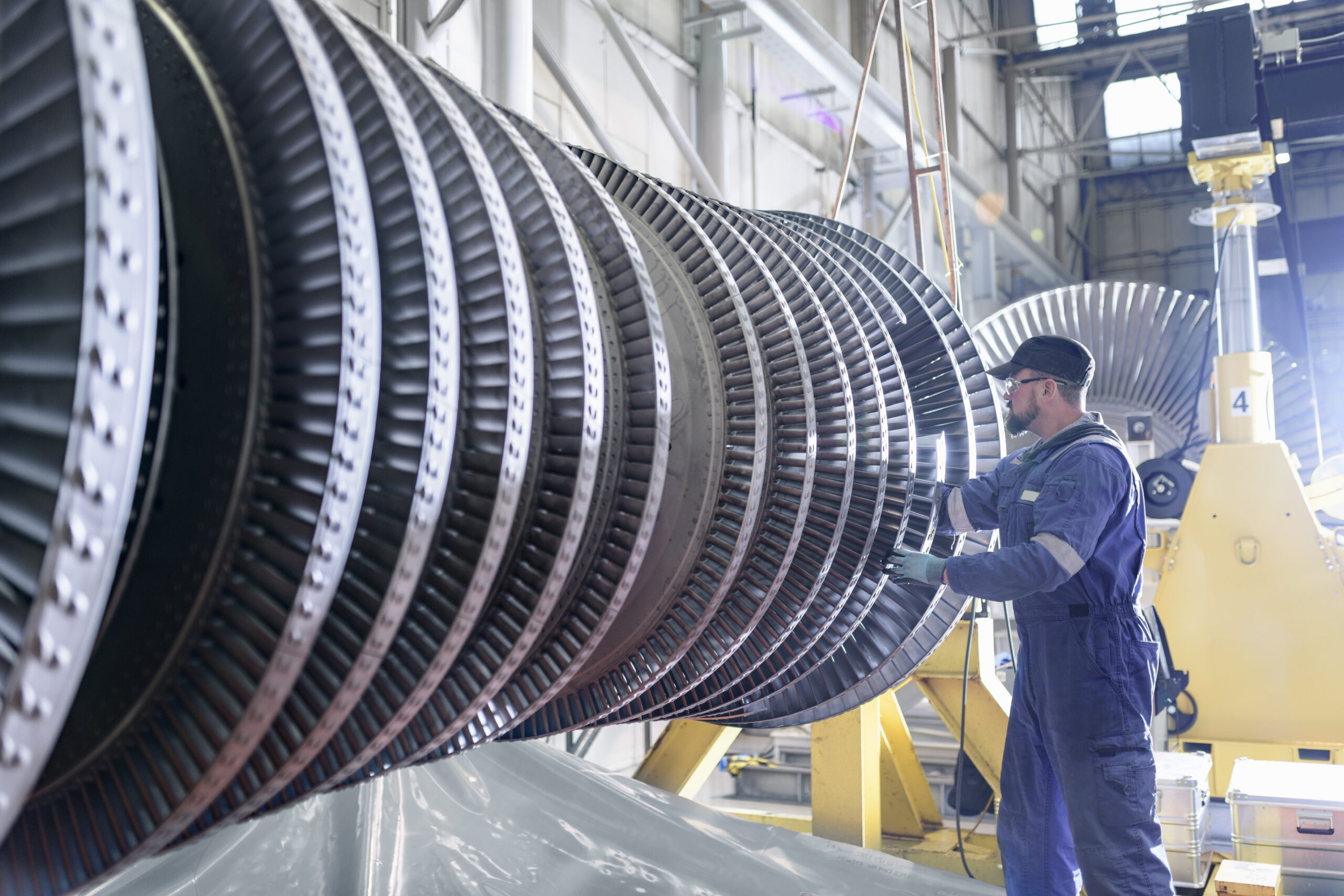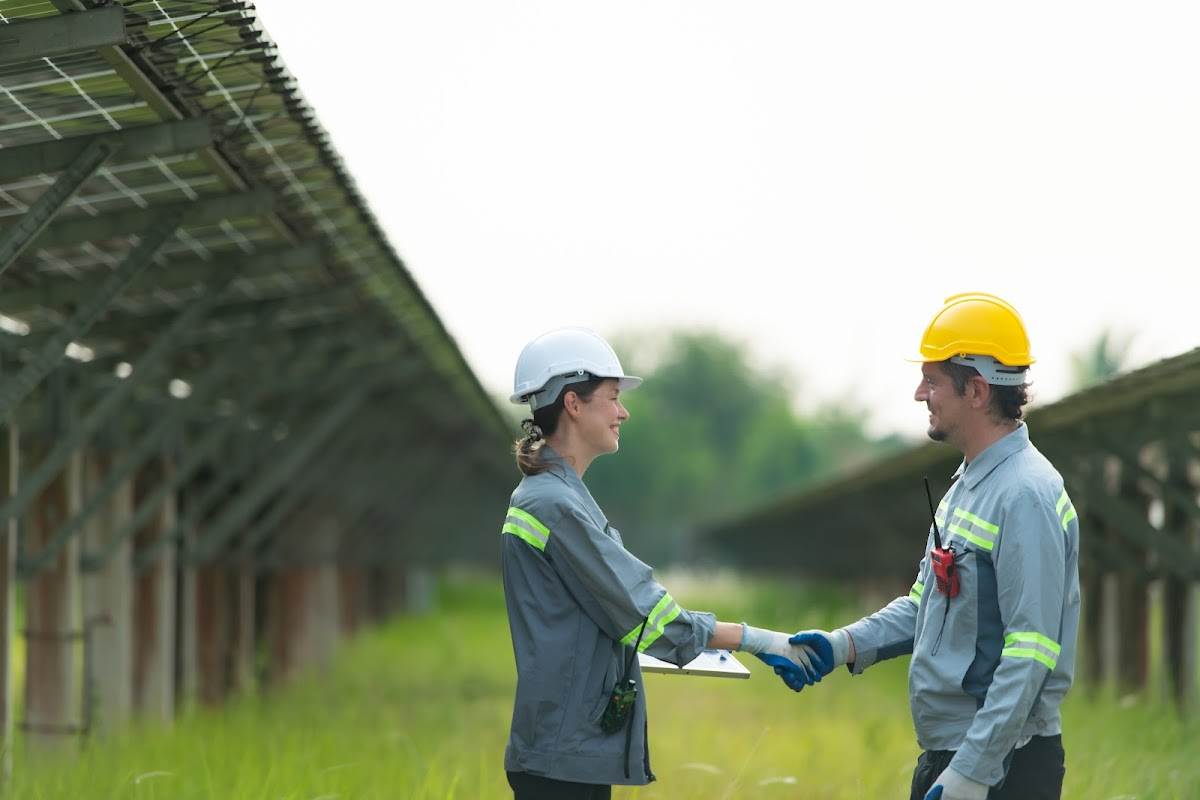Turbines are at the heart of many industries, from generating electricity in power plants to driving the compressors in jet engines. They are robust machines designed to convert energy from a fluid into mechanical energy. Given their critical role in modern technology, understanding turbine parts, their selection, maintenance, and the latest innovations is fundamental for professionals in the field.
Selecting the right parts, maintaining your turbines meticulously, and staying abreast of technological advances are all key to optimizing the performance of your turbines.
Always factor in the operational environment, material characteristics, and the potential for future technological integration when deciding on your turbine machinery.
Understanding Turbine Parts
At its core, a turbine is a device that converts kinetic energy from a fluid (liquid or gas) into mechanical energy through dynamic rotating blades. From the gas turbines in power plants to the steam turbines generating electricity, they come in various shapes and sizes.
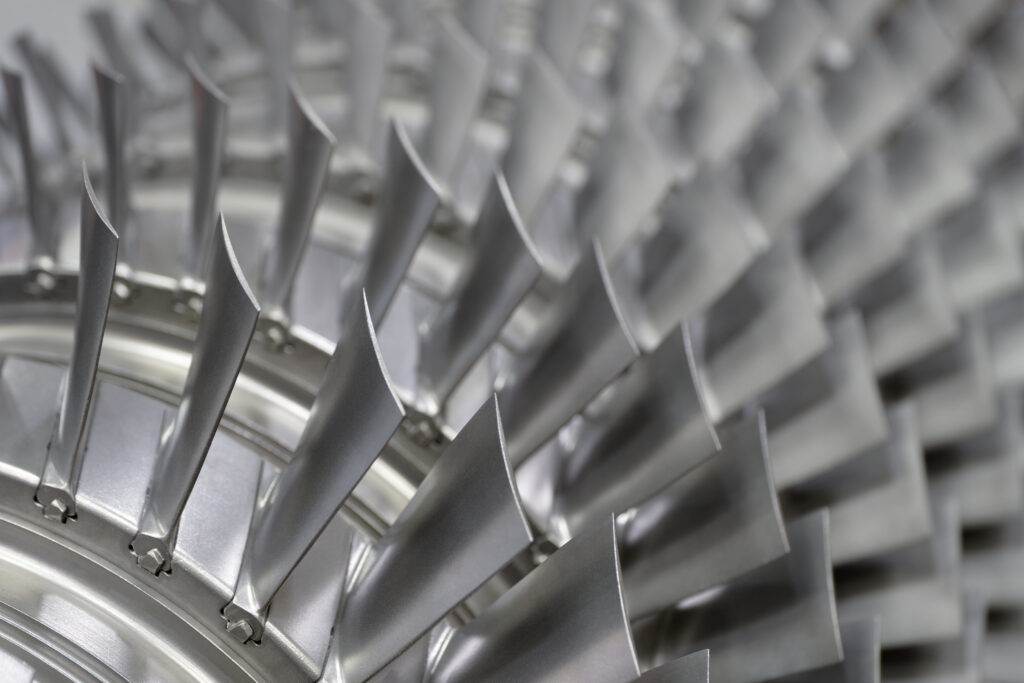
The Different Types of Turbines
- Steam Turbines: Convert steam energy into mechanical work.
- Gas Turbines: Utilize expanding gas to spin and produce energy.
- Water Turbines: Use flowing or falling water to generate power.
Turbines stand as a testament to human ingenuity and the quest for efficient energy utilization, powering everything from local power plants to the engines of massive airliners. With companies like AP4 at the forefront of turbine technology, understanding the essential components and materials becomes critical for industry professionals.
AP4, renowned for its expertise in turbine parts and services, not only supplies but also innovates within the sector, ensuring their clientele—spanning power generation, aviation, and renewable energy—have access to the most advanced and reliable turbine components. Here is a breakdown of the primary components:
A. Rotor Blades or Vanes
Rotor blades, or vanes, are the heart of the turbine engine. This shaft is the core axis that the rotor blades attach to, converting fluid energy into rotational energy. These dynamic components slice into streams of fluid (be it air, steam, or combustion gasses) to capture kinetic energy and transform it into usable mechanical motion to generate electricity or thrust.
The design of turbine blades demands a balance between aerodynamics and durability. Made from advanced materials such as titanium alloys in gas turbines or reinforced composites in steam turbines, each blade is a marvel of innovation tuned to withstand extreme temperatures and stresses.
B. Stators
Stators work in silence within the shadows of the rotor blades, but their role is no less critical. Functioning to redirect the flow of fluid, they optimize the path for the kinetic energy to be efficiently captured by the blades.
The stators’ design and positioning directly influence a turbine engine’s efficiency. Their meticulous configuration minimizes energy loss and maximizes output, whether in the high-powered world of turbofans or the steady turn of a steam turbine.
C. Bearings and Shafts
Bearings cradle the rotating shafts of turbines, ensuring smooth operation and minimal friction. These shafts are the connecting rods of force, hosting rotor blades and enabling their rotation.
For turbine parts, materials like ceramic or high-grade steel are selected for their durability and resistance to heat and wear. The design of these components is equally as crucial, requiring precision engineering to withstand the centrifugal forces at play in a turboprop or gas turbine.
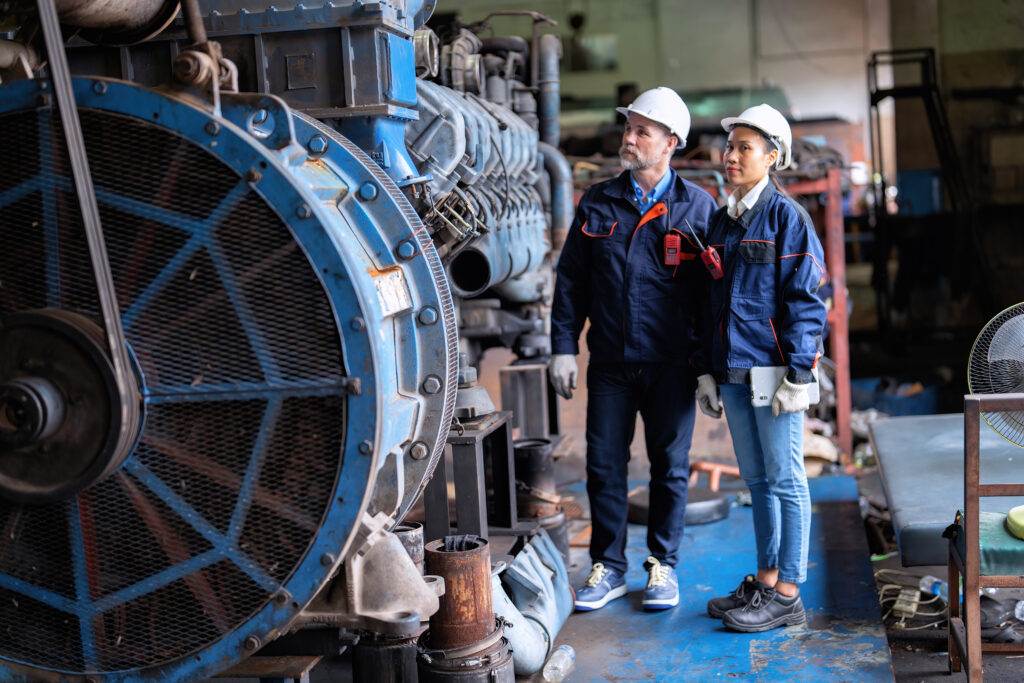
D. Combustor or Burner (Gas Turbines)
In gas turbines, the energy generation cycle begins at the combustor or burner. Here, fuel is mixed with air and ignited, producing high-pressure, high-temperature gas. This intense gas flow is then directed onto the turbine’s blades, driving them to rotate and generate mechanical energy. The design of a combustor is vital for ensuring efficient fuel combustion, which in turn dictates the power output of jet engines. It’s a finely-tuned ballet of airflow patterns and fuel injection strategies, resulting in powerful thrust.
E. Casing and Seals
Casing is the outer shell that encloses the turbine components, providing structural support and protection. It’s a shell that shields the high-energy innards from the outside world, crucial in the realm of turbine engines.
Equally vital are the seals, the unsung heroes preventing fluid leaks and maintaining optimum pressure within the turbine. They ensure the operational integrity and efficiency of jet engines and the turbine at large.
Understanding the functions and interplay of these components is crucial for selecting and maintaining a turbine.
Selection Criteria For Turbine Parts
Selecting the right turbine parts becomes less about guesswork and more about strategic decision-making in the vortex of technology and innovation. The right material for turbine parts can significantly impact performance, efficiency, and longevity. Factors to consider include:
A. Material Durability and Performance
- Must withstand extreme conditions: Whether it’s a blade in a steam turbine or a rotor bearing the fiery heart of gas turbines, choosing materials that can survive the rigorous demands of kinetic energy conversion is paramount. The durability of turbine engine parts directly correlates with their performance lifespan.
- Resistant to wear and corrosion: Jet engines and turboprops are testimonies to endurance. Materials that resist corrosion and wear ensure the turbine parts—whether in a turbofan or a humble waterwheel—continue to generate electricity without faltering.
B. Efficiency
- Energy conversion rates: The ultimate measure of a turbine’s blade or a generator’s coil is how efficiently they convert kinetic energy into usable power. High-efficiency parts don’t just whisper to the steam; they roar in the face of the elements, pushing the boundaries of energy production.
- Minimize energy loss: Efficiency isn’t just about harnessing energy but also about curbing its loss. Every component, from a steam turbine’s vastness to a turboprop’s precision, plays its part in the meticulous dance of energy retention.
C. Compatibility with Existing Systems
- Seamless integration: A new turbine blade or rotor must not only fit like a glove in the existing setup but also communicate fluently with its fellow components, ensuring the turbine, as a whole, operates like a well-oiled machine.
- Future-proof: As turbines evolve, parts need to not just belong to today’s engine and generator designs but be adaptable to tomorrow’s innovations. This applies across the board—from the grandeur of jet engines to the simplicity of a waterwheel.
D. Cost-effectiveness
The selection criteria’s sharp edge cuts deep into the economics of turbine operation. The glitter of low initial costs fades in the harsh light of lifespan expenses, maintenance needs, and operational efficiency loss.
It is crucial to understand that a higher upfront investment in turbine parts can lead to significantly lower costs in the long run. Whether it’s a robust steam turbine component or a turbofan’s sleek design, the economic balance must tilt toward longevity and performance.
The rigorous selection of turbine parts isn’t just a step toward optimization; it’s a leap toward redefining what turbines can do, from generating electricity to powering revolutions in the sky. With these criteria as your compass, navigating the vast seas of turbine technology becomes not just manageable but masterable.
Maintenance Strategies For Peak Performance
Maintaining turbine parts is crucial for ensuring the longevity and efficiency of turbines across various applications, from powering gas turbine engines in aircraft to generating electricity in power plants. Proper maintenance strategies can significantly enhance the performance and reliability of any type of turbine, whether it’s a water turbine, impulse turbine, reaction turbine, or gas turbine.
Here, we look into the essentials of turbine maintenance, covering routine inspections, preventive maintenance, and predictive maintenance practices.
A. Predictive Maintenance
We’re using the power of data to predict problems before they happen. This approach can spot troubles early on—whether it’s a steam turbine blade under high pressure or a gas turbine getting too hot. This isn’t just about being careful; it’s about using smart technology to fix things before they break, moving from ‘oops, it broke’ to ‘this is about to break—let’s fix it now.’ Implementing these sophisticated systems, however, comes with its own set of challenges, including the significant costs and technical complexities involved in integrating advanced sensors and data analytics into existing infrastructure.
B. Routine Inspections
Regular inspections are the bread and butter of turbine uptime. Every turbine rotor, every nozzle, from the impulse turbine delicately balancing on a water turbine’s edge to the robust reaction turbine ensconced in a power plant’s heart, demands eagle-eyed scrutiny.
It’s about relishing the mechanical ballet that happens across the turbine stage, recognizing the sublime harmony between the propeller and the power turbine. These aren’t just cursory glances but deep, systematic dives into the turbine section’s rhythmic pulse.
C. Component Upgrades
Today’s turbine designs are moving fast, and keeping turbine parts up-to-date is a must to keep up. Jet engines, which are a type of gas turbine, really need to work well to fly high. Changing to newer turbine blades can make them work better, give a big boost to their power, and even save a lot of money in the long run.
Turbine Terminology Every Industrial Worker Should Know
- Turbine blade: The muscled Maverick of every type of turbine, a finely-tuned blade slices through natural gas flow or river currents, translating raw power into clean rotational, electrical power.
- Turbine Design: Every curve, every edge, is a calculation towards perfection. Engineers meticulously analyze fluid dynamics, material properties, and structural integrity to ensure optimal performance and efficiency.
- Power generation: It’s the endgame of every turbine employed, from the sprawling arms of a wind power titan to the relentless churn of a steam generator.
- Nozzle and Turbine stage: The unsung heroes direct the flow and set the stage for a high-pressure performance in a gas flow ballet, wedging between potential and kinetic, thermal, and mechanical energy.
- Rotary and Power Output: This pair is the power couple of the turbine realm, where the term “electric power generation” translates into palpable reality.
For industries where turbines are used, particularly in electricity generation or in aircraft engines propelled by the potent force of gas flow, AP4’s maintenance services are integral in keeping turbines operating smoothly. By implementing a scheduled maintenance plan that includes visual checks, routine bolt tightening, and comprehensive inspections through ultrasonic and thermographic methods, AP4 ensures that turbines—whether powered by natural gas or steam—maintain their role as a cornerstone of modern energy production.
Innovations Shaping The Future Of Turbine Technology
The turbine world is on the cusp of a revolution, with cutting-edge innovations driving efficiency and sustainability to new heights. From advanced materials to the digitization of design and operation, here’s how the future of turbines is being reshaped.
A. Advanced Materials
The development of new alloys and composites is making turbine blades stronger, more efficient, and resistant to the extreme conditions found in gas turbine engines and hydroelectric turbines. Innovations in materials not only enhance the durability of blades but also allow turbines to operate at higher temperatures, significantly increasing power output without compromising the turbine’s lifespan.
B. Digital Twin Technology
Digital twin technology is creating virtual replicas of physical turbines, allowing engineers to simulate and optimize turbine performance under various operational conditions.
This innovation is pivotal in predicting mechanical failures, enhancing efficiency, and reducing maintenance costs for all turbine stages, from the compressor to the power turbine.
C. Sustainability Focus
The push toward sustainability leads to the exploration of renewable fuels and advanced carbon capture technologies in turbine operations. Efforts are underway to adapt gas and hydroelectric turbines to potentially use biofuels and to develop systems that could minimize carbon emissions. This shift, while still in the experimental and development stages, not only aims to reduce the environmental impact of power generation but also aligns turbine technology with global sustainability goals.
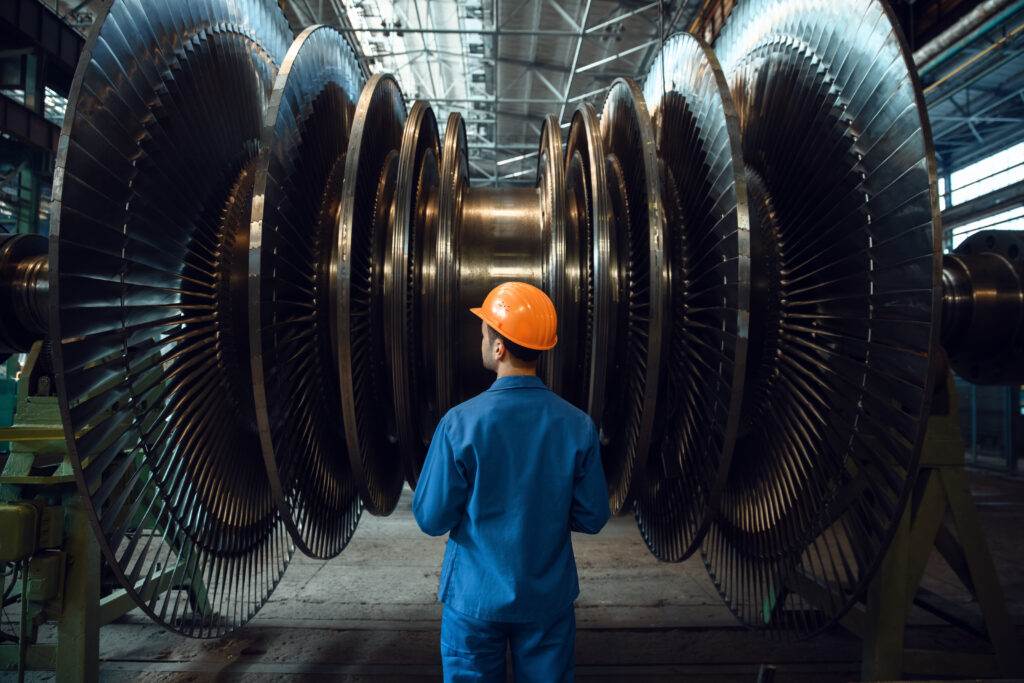
Challenges And Solutions In Turbine Technology
Turbine technology plays a crucial role in the global energy sector, from steam turbines in power plants to gas turbines in industrial operations. Despite their critical importance and widespread use, turbine technology faces several challenges. Addressing these issues is vital for efficiency improvements, cost reduction, and the integration of sustainable practices.
A. Environmental Impact
1. Challenges
- Emissions from turbines: While turbines heartbeat with power, the shadow of emissions they cast looms large. Gas turbine engines, integral to power plants, can expel pollutants that tangle with clean air initiatives.
- Resource consumption in manufacturing: The birth of a turbine blade demands a significant chunk of resources—casting a hefty ecological footprint.
2. Solutions
- Eco-materials: Turbine parts now embrace the green revolution, with a sustainable spin on everything from compressor blades to turbine rotors.
- Boost efficiency: A power turbine that squeezes maximum mechanical energy from minimal fuel intake doesn’t just curtail emissions—it revolutionizes the very meaning of the turbine.
B. Technical Limitations
1. Challenges
- Durability under extreme conditions: No turbine is immune to the wear and tear inflicted by nature’s fierce elements, from the blistering combustion in jet engines to the relentless rotation in hydraulic turbines.
- Maze of maintenance: The intricate network of parts in a modern turbine, from blades attached to Pelton wheels to a series of blades in the reaction turbine, renders maintenance a formidable task.
- Tech integration woes: Upgrading a conventional turbine system can feel like threading a needle amid a cyclone—fraught with complications and resistance.
2. Solutions
- Material science magic: From the propeller to the nozzle, advancements in materials arm turbine components with an armor of resilience.
- AI and IoT in maintenance: Picture this—a turbine section self-diagnosing wear and communicating in real-time, all facilitated by predictive algorithms and internet-connected sensors.
- Modular mindset: The adoption of modular designs in turbine technology facilitates seamless upgrades and simplifies maintenance, aligning with the latest innovations. This approach to modularity not only simplifies the replacement of parts but also significantly reduces downtime during maintenance. By designing turbines in interchangeable modules, technicians can swiftly swap out components, streamlining both routine maintenance and urgent repairs, thereby enhancing overall operational efficiency.
C. Economic Factors
1. Challenges
- Hefty upfront costs: Power output excellence comes at a price—turbine installation and the integration of cutting-edge tech can strain budgets, making investors waver.
- Market seesaws: The turbulence of market trends can send the economic viability of turbines into a tailspin.
- Policy pivots: A turbine technologies roadmap can be redrawn overnight, thanks to shifting regulations that upend long-term strategies of turbine manufacturing.
2. Solutions
- Governments at work: Policymakers’ subsidies and incentives can rejuvenate the turbine sector and ease the financial burden of initial setups.
- Collaboration is key: Joining forces, the public and private sectors are diving headfirst into R&D, diluting the individual cost and risk amidst the forge of innovation.
- Diversification: By expanding the horizons of turbine application—from powering homes to driving industrial processes—turbines shelter themselves against market and regulatory storms.
Turbines are fundamental to a wide array of applications, and their efficient operation hinges on the quality and care of their constituent parts. By diligently selecting, maintaining, and innovating within the world of turbine parts, we can ensure these marvels of engineering continue to propel us toward a future of endless possibilities.
Are you engaging effectively with your turbine systems? Embrace the future of energy with smarter selections, diligent maintenance, and groundbreaking innovations in turbine technology.
